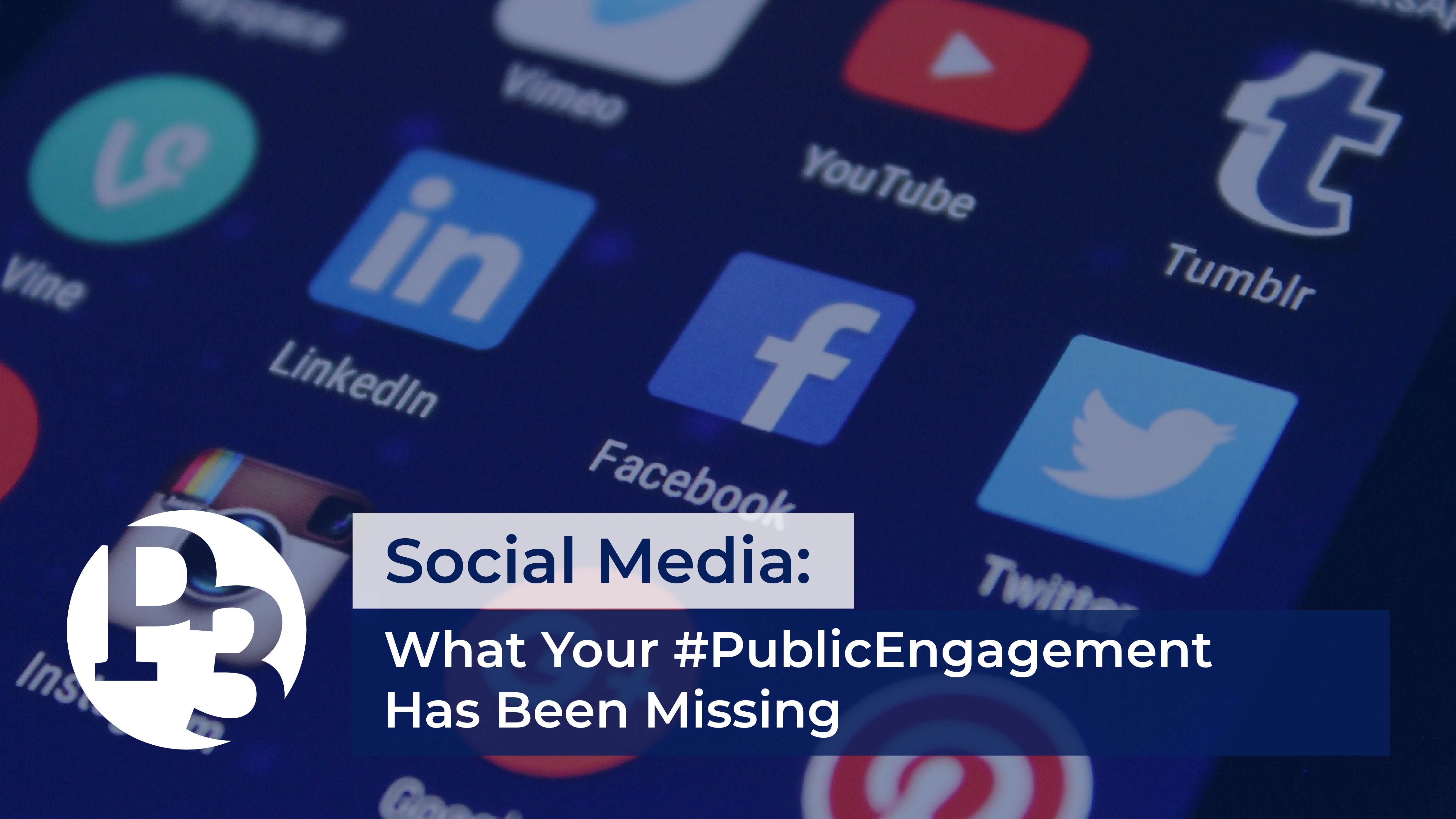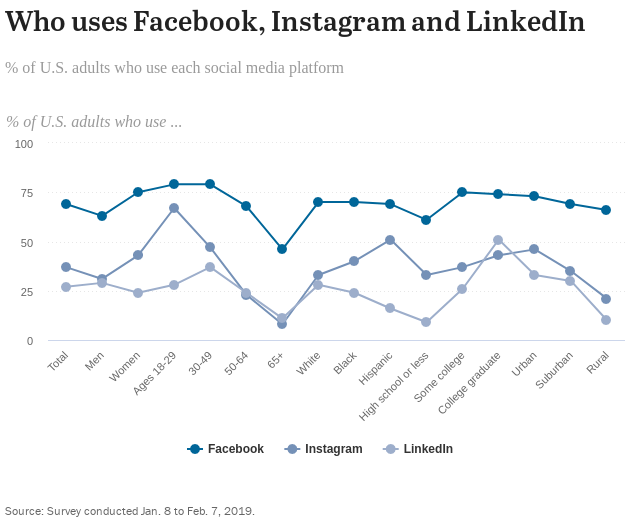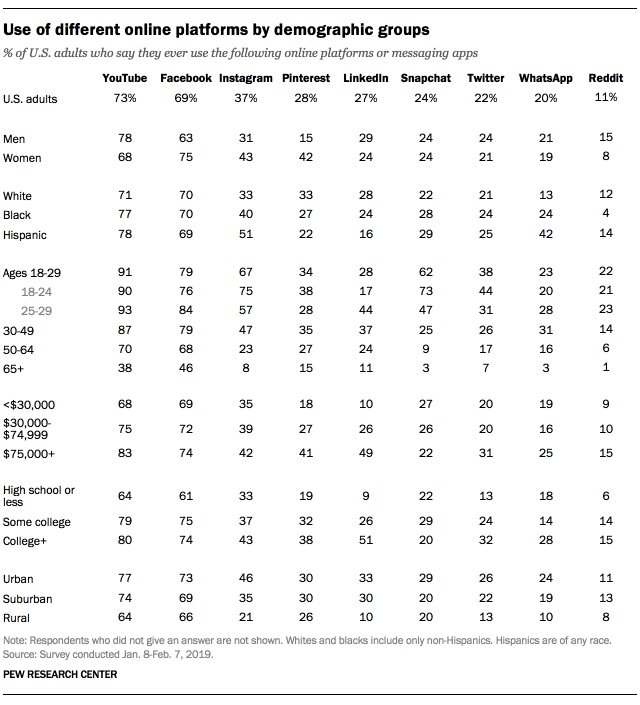
30 Jun Social Media: What Your #PublicEngagement Has Been Missing
June 30th is also known as #SocialMediaDay! In celebration, we would love to take this opportunity to discuss one of our favorite methods for communication and engagement.
Social media is a great tool to engage citizens in a way that is convenient for them. While people may not feel inclined to locate information on a local government website, or subscribe to email updates, they can still receive necessary information through social media. This allows for social media users to get basic project information and community updates without going out of their way to do so. In turn, this creates a more informed population that is more empowered to participate in their community.
Did you know…
- 72% of the public uses some type of social media (Pew Research Center, 2019)
- 90.4% of Millennials, 77.5% of Gen X, and 48.2% of Baby Boomers use social media (eMarketer, 2019)
- 7-in-10 Americans have used Facebook (Pew Research Center, 2019)
- 64% of Instagram users are under the age of 34 (Statista, 2020)
- 73% of U.S. adults report using YouTube and over 90% of adults ages 18-29 use YouTube (Pew Research Center, 2019)
It is evident that many regularly use social media, and therefore, it is an excellent platform for engaging your community. So how do we use these tools in an effective way to engage our communities? Check out the tips below!
Get to know your audience.
Just as you should know demographics for any project or outreach, you should also get to know your social media audiences! Social media insight and analytic tools are an excellent way to familiarize yourself with who is in your audience and how they are engaging with your content.
Use social media insights and analytics to discover:
- The demographics of your audience, if available
- The types of posts your audience engages with the most
- The best times of day to post based on past performance
Your insights are full of useful data to develop social media content that is more engaging and effective. Take a look once in a while to see what works well and what you can do to better reach your community.
If you don’t have a big social media following yet, or if the demographics aren’t available, the chart above can help you figure out who generally uses which platform. This can help you understand your potential audience and make sure to deliver messages that are relevant and useful to them.
Make videos & keep them short.
When asked what type of content they wanted to see, most social media users identified video content as their top choice. Considering video viewers retain 95% of the information they see versus 10% retention for text, videos really might be the best way to convey your project information.
Most smartphones capture video footage at a quality that works great for social media, and there are a number of easy-to-use online platforms that can be used to create a polished video. Creating a video for your social media doesn’t have to be hard. While there are some promotional videos you may want to spend more time on, investing a little time in some short social media videos can help boost your overall engagement in the long run.
When you’re creating your videos, keep in mind:
- A 2016 study by Wistia showed that user engagement significantly decreases after 2 minutes. So, when you make a video, it is best to keep it short.
- A Nielson study commissioned by Facebook found that in a video campaign, 47% of a video’s value was delivered in the first three seconds and 74% was delivered in the first ten seconds. This exhibits how crucial it is to make your message clear up front and make an impactful first impression.
An easy way to figure out what type of content works well and what type doesn’t is to spend some time on your own social media newsfeed. What do you find appealing? What loses your interest? Take note of these elements and incorporate (or avoid) them in your next video.
Add captions to your videos.
On most platforms, videos in a newsfeed auto-play without sound. Taking the time to add captions allows your video content to be understood without sound.
By adding captions to your video, you:
- Allow users to understand your message right away
- Make your content more accessible to deaf or hard-of-hearing individuals
- Increase the value of your content
Consider targeted ads.
We mentioned the value of social media insights and analytics for familiarizing yourself with your audience. These tools allow you to see who is and who is not being reached by your social media posts. To increase the efficacy of your outreach, you should consider using targeted ads to help reach those hard-to-reach groups.
Most social media platforms provide tools for targeted advertising. First, consider who you want to reach and which platform will best reach that group. For instance, if you were trying to reach 18- to 29-year-olds, Instagram or Snapchat might be the most effective. However, if you were trying to reach 50- to 64-year-olds, you’d be more likely to find them on Facebook or YouTube. Understanding the best platform is the first step in creating an effective targeted ad. The chart below from the Pew Research Center overviews each social media platform’s demographics.
Once you identify the best platform, you can create a targeted advertisement that can reach people within a specific location (geotargeting), who are interested in similar topics, or who meet a certain demographic. Targeted ads can also fit any price point with options to allocate a specific dollar amount to each day or across a campaign time period. This is a great way to reach your intended audience on a limited budget!
Create events.
Having a project meeting? Make sure to post about your event and create an event on Facebook to generate a buzz! Using the event tool in Facebook, curious community members can view all of your meeting times and locations in one place, indicate that they’re interested, and receive notifications about an upcoming meeting.
Remember it’s worth your time.
It’s worth your time to put a little extra effort into your social media outreach to make it a success. With 49% of the world’s population using at least one platform, social media can be a great, convenient, and inexpensive method to reach a lot of people.
Social media shouldn’t take the place of other outreach efforts, but it is a great supplemental engagement tool to reach those that may not participate through traditional methods, or those looking for more convenient ways to receive information and stay involved. You can share meeting dates, post links to surveys, or provide project updates in a place that’s convenient for your community.
How are you using social media to reach your communities? Let us know in the comments below!
TL;DR
About the author: Deirdre Scanlon is the Communications Engagement Specialist for Public Participation Partners (P3). When not dreaming up new ways to equitably engage the public, you can find Deirdre tending to her houseplants or walking the trails of Raleigh, NC.




Sorry, the comment form is closed at this time.